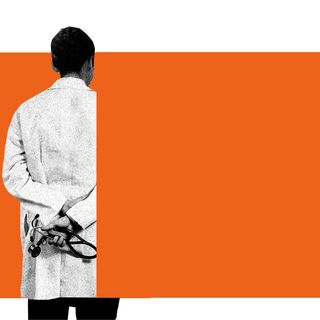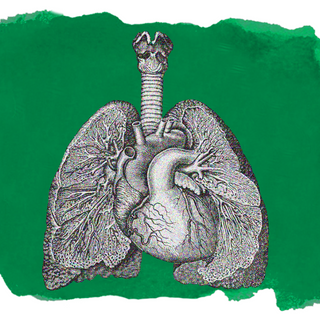
HPV Vaccines Can Save People’s Lives. Why Is Awareness, Access Still So Low?
The immunization challenges with cervical cancer are reflective of systemic anxiety around women’s sexual and menstrual health.

Zeisha was 29 when her gynecologist told her about the human papillomavirus (HPV) vaccine. She paid Rs. 10,480 for one dose of Gardasil 9, the only vaccine available in a private hospital near her house. “And I’m so naive I thought that was the collective overall cost. Only after getting the medicine, I was like, oh shit!” By September 2022, she has one dose remaining. “I’m mentally preparing because it is three months away, so I need to save accordingly.”
Little did she know that three months later, a cheaper alternative will be available to her. India’s first indigenous HPV vaccine, announced by the Serum Institute of India recently, will reportedly protect against four strains of HPV. Importantly, it will be priced between Rs. 200 and 400 per dose – almost 95% less than what people are currently paying – and will begin production in November this year.
The launch of this vaccine has suddenly propelled cervical cancer into the public eye. Many have eagerly termed this development a “game-changer.” But does this mean the HPV battle is won? Not quite. The immunization challenges with cervical cancer have always reflected deep-seated systemic anxiety around women’s sexual and menstrual health.
The vaccination’s long-awaited introduction is, then, a sobering moment. It shows how a social disregard for women’s health decides what life-saving cures are developed, and who has access to them. And without a radical reimagining of how we view women’s health, an indigenous vaccine may not be enough to hold ground – let alone claim victory – against challenges in the system.
Sexism
We lose one woman every eight minutes to cervical cancer in India. And more than 95% of these cases are caused by HPV. What is more astonishing than the prevalence of HPV-related cervical cancer is the fact that it is one of the two cancers against which immunization actually works. Despite this, HPV vaccines in India are a cure that “one can often not find out about — until it’s quite late,” notes Kirti, 23.
“The disease burden in India is really high,” says Mridu Gupta, co-founder of CAPED India, an advocacy group raising awareness about diagnosis and prevention. India contributes one-fourth of the world’s total cases of cervical cancer – all preventable deaths.
“But we still don’t talk about it.”
Related on The Swaddle:
HPV Vaccine Can Cut Cervical Cancer Cases by 90%, Proves Vital Study
This may be in large part due to the misconception “that cervical cancer only affects the women population,” says Mridu. And while women represent the majority of cases, HPV can cause cancers of the vulva, vagina, penis, anus, the back of the mouth, and upper part of the throat across the gender spectrum. The infection is commonly transmitted through unprotected sexual interaction, and nearly everyone will get HPV at some point in their lives.
However, the misconception prevails and leads to cervical cancer not being given importance in patriarchal Indian households, where women’s health is already most likely to be deprioritized.
This bias also exists on the state level: there is a lack of political will to address cervical cancer, which manufactures further invisibilization.
In 2018, the Ministry of Health and Family Welfare decided not to include the HPV vaccine as part of its National Immunization Schedule. This is despite the fact that almost 71 countries had included the HPV vaccine in their routine vaccination programs upon recommendation by the World Health Organization in 2017.
The National Immunization Schedule is a list of necessary vaccines for infants, children, and pregnant women – like tetanus and hepatitis – which are all funded by the government and are offered to the public for free. “How many people have actually seen somebody dying because of tetanus, but everyone still goes and gets a tetanus vaccine because it has been promoted. Everyone has heard about tetanus and they know when they need a shot” notes Mridu. “If HPV was there in our immunization program, you automatically would assume it is necessary.”
The exclusion of HPV vaccines from the schedule, and by extension its universal immunization program (UIP), is a decision determined due to budgetary constraints, experts say. The two available vaccines before the new Serum one cost somewhere around Rs. 3,000 – 6,000 – making HPV an expensive vaccine to put under the public healthcare machinery. The cost analysis goes something like this: does a disease that is more prevalent among adolescents and women warrant an investment of this kind?
“There is a whole section of people who believe that there are other diseases that are more important, and it is an added cost in the family budget,” says Mridu, explaining the cost-benefit analysis. It remains unclear whether the vaccine will be included in government policy despite its lower cost.
Sexual Stigma
Besides cost, “there is also that taboo that [HPV] is a sexually transmitted infection,” remarks Swati Saxena, Ph.D., an expert in public health, gender, and immunization. That HPV is transmitted through unprotected oral, vaginal, and anal sex makes cervical cancer seems like a provocative discourse.
The stigma around women’s sexual health is rooted in the premise that a woman has a sexual identity. “People think that, does it lead to promiscuity? If I give this vaccine to my daughter, is it in a way giving her sort of a hint that she can become sexually active? It can mean all sorts of things,” explains Saxena.
This was Kirti’s experience too when she consulted her family doctor some six years ago about the vaccination. He volunteered little information – “probably because he’s very stigmatized with respect to sex and hence didn’t want to have this conversation.” She was told she was just “hearing things” at school and “didn’t know best.”
If HPV vaccines help prevent sexually-transmitted infections, which are erroneously linked only to multiple sexual partners, then a monogamous, married woman shouldn’t ideally need it.
In villages and Tier 2 and 3 cities, this means that women’s sexuality, and any malady related to it, retreat into collective silence. “Cervical cancer, much less vaccine, rarely ever comes out from people’s mouths (in rural areas),” notes Ravi Sisodia, a program officer working with rural communities on cancer awareness. “This is a topic they don’t share, they don’t talk about.” Ravi recalls that even when women are talking to community health workers, like ASHAs or ANMs, about cancer, their husbands would reprimand them.
Awareness
Recently, CAPED conducted a survey across 20 Indian cities to gauge how the prevalence of the illness was perceived outside clinical trials and case studies. About 47% of women surveyed had never heard about cervical cancer. Out of the 53% who did, 23% of women thought it was a cancer of the neck. “The fact is we have barely [any] women across the strata who even heard about cervical cancer, and even fewer people than that know that there is a vaccine,” says Mridu.
Related on The Swaddle:
How the Covid19 Pandemic Worsened Tuberculosis Care for Women
Jaishree Kumar, 23, has known about the vaccine ever since 2006 when Gardasil was launched in India. It was essential for her to get the vaccine; there was a family history of cervical cancer that could be traced back to her great-grandmother. But the lack of information from public health sources discouraged her from getting the vaccine earlier.
Zeisha too encountered multiple myths while researching the vaccine – it works only if one takes it before they are sexually active, or it’s too late if you’ve crossed the age of 25. That’s not the case, Dr. Somya Gupta, a Delhi-based gynecologist, clarifies. While the vaccine may be most effective in the adolescent age, the age is erroneously capped to the early 20s in many medical consultations because the assumption is women aren’t sexually active before marriage. Anyone between the ages of 12 and 45 are eligible to get it, and vaccination is important because one can contract the virus multiple times.
Repeated exposure to HPV through multiple sexual partners and condomless sex can lead to the virus remaining in the cervix, and then causing cancer 10-15 years later. “Almost all HPV infection is acquired through unsafe sex but more than 90% of HPV infections resolve on their own in one year,” notes Dr. Gupta. “There is no harm in getting the vaccine and it might offer some protection even if a woman has already been exposed to the virus through intercourse. It might be beneficial.”
Many women note it was an Instagram story they viewed in passing that prompted them to enquire about the vaccine. Kajal Singh lives in a village some 40 kilometers from Allahabad, and was 21 when she found out about it from a social media influencer who is also a doctor. Last month, she woke up with plantar warts on her feet – grainy blisters that had begun to peel. She was told by a practitioner that it is because of a non-cancerous HPV virus, but she struggled to find someone to discuss the modalities of the vaccine with. “I still don’t know when is the right time to get vaccinated or if I’m even going to get any benefit since I already have the virus.”
Ultimately, it was an Instagram reel that helped answer some questions. “I wouldn’t have known about it unless I watched a reel.”
Social media awareness can in many ways bridge the gap between women and their access to health knowledge – to an extent. But these are band-aid solutions over festering wounds.
“We definitely need more explicit messaging at all clinics and hospitals, with pointers on its efficacy, the right time to get it, etc. Just like other kinds of nutritional posters that we often find in these health institutions,” says Shikha, 33.
Why the vaccine is critical in India
Cancer prevention is a fight waged on two fronts: early diagnosis through screening measures (like pap smears for women) and prevention through vaccinations. One of the reasons health experts in India rally for a robust vaccination strategy rather than screening is because of the lack of resources. There are not enough doctors, state-run clinics, or resources to effectively reach millions of women living in pockets outside the reach of the internet. Screening programs – such as pap smear testing – require quality health infrastructure, with gynecologists, clinics, and health workers, all of which are notably wanting in India’s public health ecosystem.
Anecdotally, experts note how many women are unaware of even the need to get a pap smear, a procedure to test for cervical cancer. “Women have to be 30+ to get screened now in India. She may be sexually active at any age, but 30+ is where they will start the screening, whether she is married or not married, if they are sexually active,” explains Mridu.
Pap smears also become the bogeyman of promiscuity: women often fear the judgment of results and the stigma of getting tested in the first place. The test is also markedly painful, making screening for cervical cancer neither affordable nor practical.
Related on The Swaddle:
Indian Women Feel Shamed, Harassed by Doctors. How Can Health Care Treat Women Better?
The barriers to pap smear testing are direr in government-run hospitals, Dr. Gupta notes. “A person has to be relaxed and has to be examined in a calm environment, which is not at all the case in government hospitals where there are 100 women standing in line to be seen by the doctor in the next two-three hours. It’s not an environment conducive to conducting such invasive examinations.” She paints a picture of scarce logistical resources: there are not enough speculums (a duck-bill-shaped tool that doctors use for vaginal examination), lubricants, and knocking jelly that help numb the pain. Moreover, many women are also wary of the speculum as a device that exposes their body parts – the vaginal hair, in particular – to others.
***
The deprioritization of cervical cancer is a result of money, stigma, and lack of knowledge. But it signals a blind spot in medicine: women are never seen in terms of their personhood, but always as maternal bodies meant for the explicit purpose of reproduction. This not only means that their sexual and menstrual health is systemically disregarded but that women’s health as a whole is reduced to the idea of “need.” If there are no symptoms that are visible to the naked, untrained eye, then the woman doesn’t need medical assistance – much less a vaccination. Many women, particularly in rural areas, mention how they have to “justify” going to a clinic in the first place.
But protection against HPV is critical not only for women’s health but also for gender equity. “We need to really think of a way to raise awareness to remove the stigma around sexuality so that women can access this vaccine,” Dr. Gupta says.
A 2013 study that analyzed the barriers to the acceptance of HPV vaccination in India found that “addressing parental concerns, health worker training and policies, and efforts to minimize cost will be central to successful HPV vaccine implementation.”
One way is through sensitization workshops, for doctors and rural health workers who interact with the women the most. Dr. Gupta notes how misogyny, reproductive bias, and personal beliefs become intangible obstacles. “We need to stick to the science, to the evidence-based medicine, and not let judgment come in the way.”
The other, more visible aspect is through state-run awareness campaigns that have a greater outreach. As of 2022, two states have begun with promotional campaigns. Mohalla clinics in New Delhi – community-run clinics in local districts – are counseling women about cervical cancer and how vaccination can help with prevention. Sikkim introduced the vaccination through school-based drives in 2015, encouraging female students to take the vaccine. Experts say this model can be replicated across other states in the country.
Arguably, the matter of accessibility is even more grating in an Indian context, given our repute as the vaccine powerhouse. India has successfully run immunization drives for tuberculosis and remains a case study in polio eradication. “We have such a robust vaccination program,” notes Dr. Gupta. “The vaccine uptake in India is not bad; in fact, it is very good, as long as it is incorporated in the national immunization schedule.” That is the end goal, because screening and other diagnostic infrastructure require more investment in women’s healthcare.
Detection for HPV-related cervical cancer is a slow battle, which makes early prevention the only reasonable cure. Ultimately, according to Dr. Gupta, including the vaccination in the national immunization schedule is what will be “the game changer.”
It brings to mind author Sun Tzu’s famous treatise on war: “Perhaps, the greatest victory is one that requires no battle.”
Saumya Kalia is an Associate Editor at The Swaddle. Her journalism and writing explore issues of social justice, digital sub-cultures, media ecosystem, literature, and memory as they cut across socio-cultural periods. You can reach her at @Saumya_Kalia.
Related


Burnout Among Doctors Is Not Only Impacting Their Health, but Also Patient Safety, Finds Study
